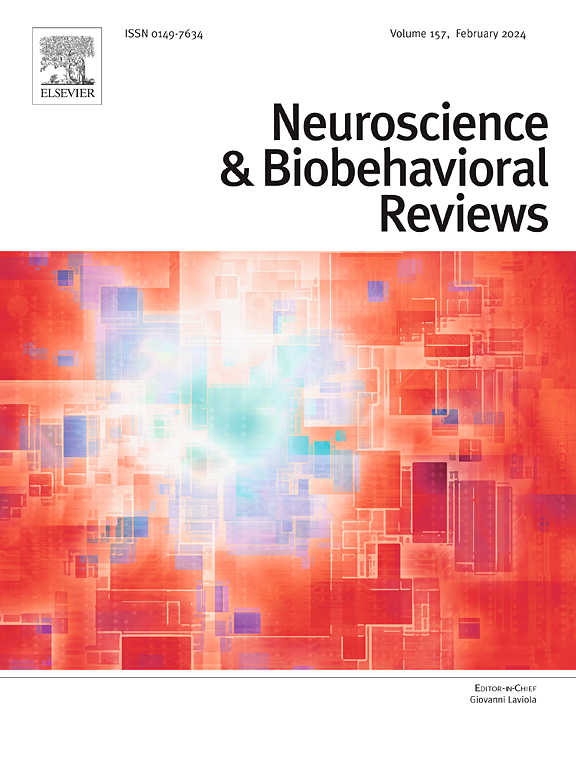纤维肌痛疼痛加工改变的ALE荟萃分析:循证过程模型。
IF 7.9
1区 医学
Q1 BEHAVIORAL SCIENCES
引用次数: 0
摘要
纤维肌痛(FM)的核心疼痛相关症状可能与疼痛处理机制的改变有关。一方面,一些fMRI研究被用于评估FM患者对不同种类有害刺激的神经反应性可能发生的变化。另一方面,仍然缺乏对这些发现的定量总结。因此,对其进行ALE荟萃分析(FWE, p本文章由计算机程序翻译,如有差异,请以英文原文为准。
An ALE meta-analysis of pain processing alterations in fibromyalgia: Toward an evidence-based process model
It has been hypothesized that core pain-related symptoms of fibromyalgia (FM) might be associated with alterations of pain processing mechanisms. On the one hand, several fMRI studies were conducted to evaluate possible alterations of neural responsiveness toward the presentation of different kinds of noxious stimuli among patients with FM. On the other hand, a quantitative summary of these findings is still lacking. Accordingly, it was conducted an ALE meta-analysis (FWE, p < .05) of studies comparing brain responsiveness to the administration of painful stimuli between patients with FM and healthy controls (HCs). Twenty-one studies were included for meta-analytic procedures. Results showed 3 main findings: i) key areas of the pain matrix (i.e., dorsal anterior cingulate cortex [dACC], basal ganglia and thalamic nuclei) were commonly involved in pain processing in both FM patients and HCs; ii) pain processing in FM patients were characterized by a recruitment of the right insula; whereas, HCs mainly recruited prefrontal areas; iii) patients with FM, compared to HCs, showed an increased magnitude of dACC and supplementary motor area responsiveness toward the presentation of painful stimuli. These findings suggest that altered pain processing in FM is characterized by: i) an increased salience of painful stimuli, which are processed at a viscero-somatic non-mentalized level; ii) high intensity and low granularity of painful experiences accompanied by a negative valence, and modulated through maladaptive avoidance strategies; iii) the development of hypervigilance toward any potential harmful stimuli
求助全文
通过发布文献求助,成功后即可免费获取论文全文。
去求助
来源期刊
CiteScore
14.20
自引率
3.70%
发文量
466
审稿时长
6 months
期刊介绍:
The official journal of the International Behavioral Neuroscience Society publishes original and significant review articles that explore the intersection between neuroscience and the study of psychological processes and behavior. The journal also welcomes articles that primarily focus on psychological processes and behavior, as long as they have relevance to one or more areas of neuroscience.

 求助内容:
求助内容: 应助结果提醒方式:
应助结果提醒方式:


